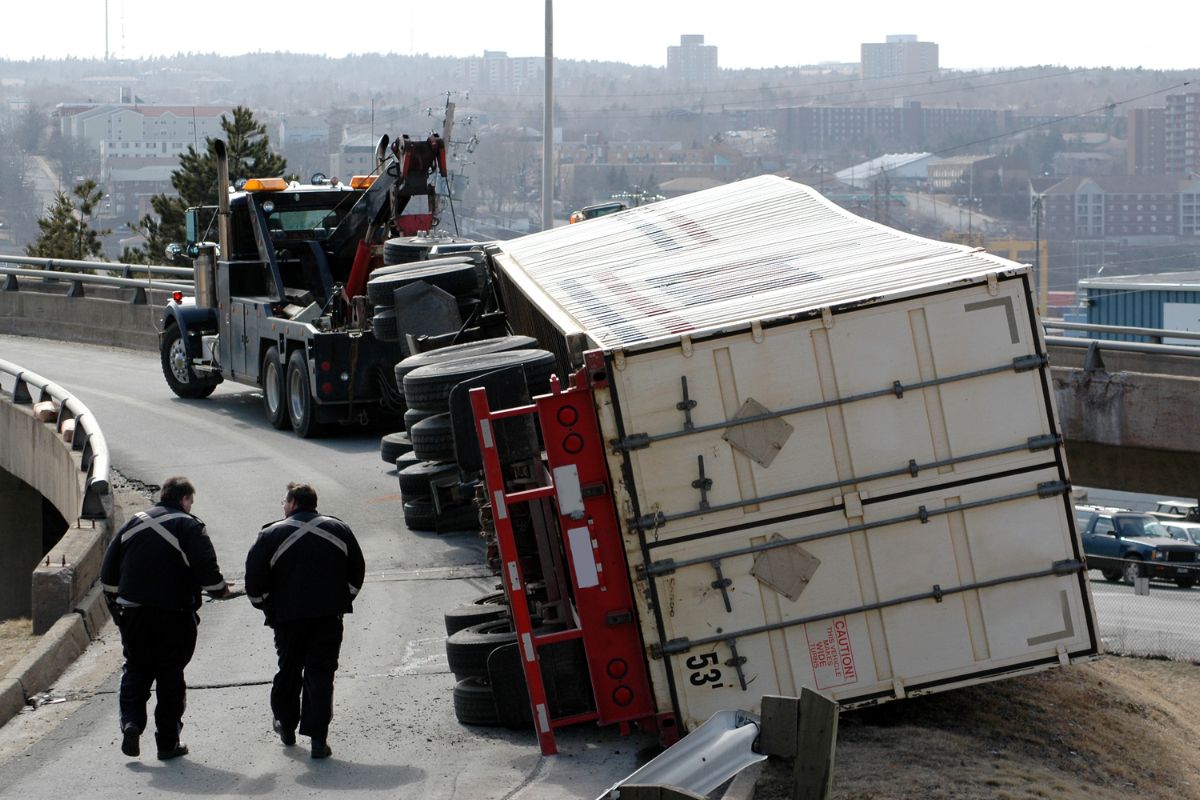Naturally, our concerns regarding vehicles on the roads tend to lean towards personal vehicles. Nevertheless, one of the largest dangers to American highways exists in the form of giant commercial trucks. These vehicles can weigh as much as 80,000 pounds and can result in terrible accidents. The complexity of these crashes is determined by the categories of truck accidents, each with its distinct risks and legal headwinds.
For insurance companies and legal experts, truck accidents tell us a lot about liability and how compensation can effectively be tackled. Understanding the types of truck accidents is extremely important from the perspectives of the drivers and the victims too. From a series of collisions, known as jackknife crashes, to underride collisions, it’s important to understand all varieties.
Jackknife Accidents
A jackknife accident occurs when the industry truck trailers swing out to form a sharp angle with the truck cab, resembling a pocketknife’s fold. This is usually as a result of hard braking, particularly in relation to low friction on the road and an unstable load on the vehicle.
Common causes:
- Improper braking techniques
- Slick roads due to rain or snow
- Speeding or navigating curves too quickly
- Brake malfunctions
Legal considerations: To drag a number of vehicles together into a crash, as a multi-vehicle accident often leads to this. Liability may worsen further than the driver due to maintenance workers and/or trucking companies for the driver if, for some reason inadequate equipment or poor training was the main factor.
Rollover Accidents
Truck rollovers can happen in seconds, particularly when a driver loses control while turning or attempting to avoid another vehicle. The high center of gravity in commercial trucks makes them vulnerable to tipping.
Risk factors include:
- Speeding around curves
- Uneven cargo distribution
- Tire blowouts or brake failure
- Driver fatigue
Legal focus: Who loaded the cargo? Was the driver trained to manage sharp turns at high speeds? A rollover investigation often involves trucking logs, black box data, and cargo documentation.
Underride Accidents
Underride accidents occur when a smaller vehicle slides under the back or side of a truck’s trailer. These accidents are often deadly, especially for passengers in the front seat. The impact usually shears off the upper part of the smaller vehicle.
Contributing factors:
- Sudden braking by the truck
- Poor visibility
- Missing or ineffective underride guards
- Nighttime or low-light driving
Legal implications: Underride guards are required by federal regulations, but not all trucks are equipped with them. Failure to install or maintain these guards can lead to shared liability between the trucking company and the manufacturer.
Blind Spot Accidents
Every vehicle has blind spots, but trucks have large “no-zones” that can stretch across multiple lanes. Drivers who fail to check these areas before switching lanes can collide with unsuspecting vehicles.
High-risk scenarios:
- Lane changes on highways
- Merging in city traffic
- Turning at intersections without adequate mirrors or sensors
Legal angle: Was the truck equipped with blind-spot monitoring technology? Were the side mirrors properly positioned? Eyewitness accounts and dashcam footage often become critical in these cases.
Rear-End Collisions
When a massive truck rear-ends a smaller vehicle, the results can be catastrophic. These accidents are especially dangerous at highway speeds, often resulting in crushed vehicles and severe whiplash or spinal injuries.
Leading causes:
- Distracted driving
- Following too closely
- Fatigue
- Brake failure
Determining fault: Federal regulations require commercial drivers to maintain longer following distances than passenger cars. Proving that a driver failed to do so can be key to recovering compensation.
Head-On Collisions
Though less frequent, head-on collisions involving trucks are among the most deadly. These occur when a truck veers into oncoming traffic, often due to driver fatigue, distraction, or medical emergencies.
Underlying issues:
- Driver fatigue
- DUI or drug influence
- Mechanical failure
- Poor road signage
Legal scope: These cases often involve personal injury and wrongful death claims. Investigators examine driving logs, blood tests, and onboard computer data to determine what went wrong.
Tire Blowouts
Tire blowouts may sound minor, but for trucks, they’re anything but. A blowout can cause a driver to swerve uncontrollably, especially at high speeds. It also creates dangerous debris for other drivers.
Key contributors:
- Worn-out tires
- Improper inflation
- Overloading
- Manufacturer defects
Who’s liable?: Truck drivers are responsible for pre-trip inspections, but maintenance providers and tire manufacturers may also be held accountable for defects or poor servicing.
Cargo Spills and Lost Loads
Improperly secured or overloaded cargo can fall off a truck, posing deadly risks to nearby vehicles. Even if cargo remains inside the truck but shifts during transit, it can destabilize the vehicle.
Why it happens:
- Inadequate tie-downs
- Lack of training
- Weight violations
- Third-party loading errors
Legal view: Third-party companies responsible for loading may be liable if their negligence contributed to the accident. These cases often require expert testimony to determine the correct loading protocols.
T-Bone or Side-Impact Collisions
T-bone accidents involving trucks usually happen at intersections when a driver runs a red light or fails to yield. The side of a car offers less protection, making these accidents especially dangerous.
Main causes:
- Speeding through intersections
- Misjudging turning gaps
- Failing to stop
Legal impact: Traffic signal data, intersection cameras, and witness statements become vital. Determining right-of-way and signal timing can directly impact the outcome of a legal case.
Multi-Vehicle Accidents
Trucks involved in chain-reaction or multi-vehicle crashes create chaos. Due to their size, they may impact multiple lanes or vehicles at once, escalating the severity.
Complicating factors:
- Poor weather
- Fog or limited visibility
- Distracted or impaired driving
Legal complexity: These accidents often involve multiple insurance companies and attorneys. A clear reconstruction of the crash sequence is necessary to determine fault and apportion damages.
Why Knowing the Type of Truck Accident Matters
Each truck accident type involves unique physics, regulations, and potential at-fault parties. Identifying the nature of the crash helps in:
- Understanding injury severity and medical needs
- Determining fault
- Pursuing specific claims (product liability, third-party loading, driver negligence)
- Meeting federal and state legal standards
Moreover, insurance companies often attempt to minimise payouts. Having clear documentation of the type of accident can empower your legal team to demand full and fair compensation.
Final Thoughts
Truck accidents understandably cause massive destruction to property, injure people, or mentally traumatize them. If you’ve been affected by jackknife accidents or have lost a loved one because of a violent underride collision, understanding these kinds of accidents is vital to achieve closure and closure.
No article will substitute individualized legal counsel, but these insights can guide you in wading through the insurance loopholes with certainty.
For those needing trusted legal guidance, the team at Stokes Stemle, LLC offers deep experience in types of truck accidents. Their lawyers understand the intricacies of trucking laws, industry regulations, and how to uncover the truth behind devastating accidents. When your future is on the line, they’re the team you want in your corner.











